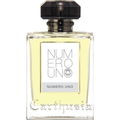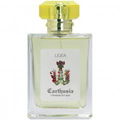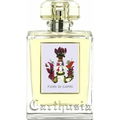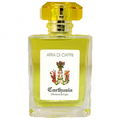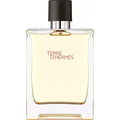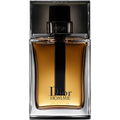Translated
Show original
Show translation

Serenissima
Top Review
12
the Charterhouse on Capri
There one still says that television does not educate.
Since I'm at home, I'm used to search the cultural programs in the late noon / early afternoon for worth seeing contributions and also often find.
So that's how I ended up on Capri for 45 minutes yesterday as well; this island that is overflowing with tourists.
After a stroll in the crowd and a visit to the "Villa Lyris", which Jacques d'Adelswärd-Fersen had built there and its beautiful garden, we went to Anacapri to the famous "Villa San Michele" by Axel Munthe.
All wonderful to look at and known, but certainly no reason to write about it in a perfume commentary.
But this trip went further: to the former Carthusian monastery of San Giacomo.
And here we find the subject of this post.
In 1380, the prior of the Carthusian monastery "of St. Jacob" (Certosa di San Giacomo), founded in 1363, learned of the impending visit of the Queen of Naples, Joan I of Anjou.
So he had fragrant flowers and herbs sought all over the island for large ornamental bouquets to provide the proper setting for this visit.
When these were now to be thrown away and also the water was to be removed from the vessels, a surprise was experienced: an unknown, very aromatic scent escaped from these flower vessels. Having become attentive let this liquid be examined by an alchemist.
The result of this first analysis was, according to history, the first fragrance of the monastery called "Garofilium Silvestre Caprese".
A first fragrance manufactory was created there.
In 1948, the then prior found this old formula in old documents and, with the Pope's permission, chemists from Piedmont/Northern Italy were commissioned to implement it.
Since then all perfume products (perfumes, soaps and others) are still produced in the old proven way and also filled by hand into flacons.
After the Carthusian monks on whose attention this discovery goes back, the enterprise received the name "Carthusia".
Even today, these fragrances spread a very typical flair, which is immediately associated with this island.
Some of the fragrances from the collection I have already tested and also commented.
Only the men's fragrance "1681" (where does he only have this name?) I have neglected at the time.
Now this TV show reminded me of it and notes on it even still exist.
(What the good old "paper economy" is useful for!)
This men's fragrance has a hot, strong pulsing heart of peppery black pepper, which it hides well under a layer of maquis scrub after the fruity opening of bergamot and mandarin delighted the senses.
Rosemary, coriander, thyme and lots of lavender accompany spicy this bizzelnde pepper dose, which fortunately for my senses still keeps within the bounds of the bearable.
Persistent sneezing and tears are spared me in any case.
Perhaps it is also due to the fact that iris immediately with their appearance a fine powder layer distributes and Neroli together with Petitgrain once again fine citrus aromas ausdünsten.
Thus they manage to neutralize this tingling sharpness somewhat.
Thus, a long-lasting base of incense and cedar can build up quietly and enjoyable.
These two smoky-spicy additions are accompanied by the slightly eroticizing scent of sandalwood and a warm light powder blanket of vanilla and musk, before amber finally luminous accents.
Carthusia's "1681" is a classic men's fragrance: in fact, an "always-on".
He does not want to move the world or impress or even dominate his environment:
"1681" wants to give its wearer spicy freshness in which he should feel comfortable.
And it succeeds; at least according to my sensual impression.
And this over an average period of time, in which its fragrance first thickens, to then accompany calmly-elegantly and become lighter, until it finally, leaving behind a spicy touch, politely says goodbye.
A "gentleman fragrance" of the old school I encountered here, even if this composition is still quite young in years.
But perhaps the time simply demanded again for a quieter fragrance.
After all, there are plenty of loud busybodies; even if many of them are mere frothers.
So "1681" was a very pleasant experience that included a brief detour to that rocky island in the blue sea.
The "Capri/Carthusia-Feeling" just!
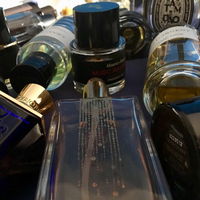






 Top Notes
Top Notes  Bergamot
Bergamot Coriander
Coriander Red thyme
Red thyme Rosemary
Rosemary Mandarin orange
Mandarin orange Heart Notes
Heart Notes  Iris
Iris Black pepper
Black pepper Lavender
Lavender Neroli
Neroli Petitgrain
Petitgrain Base Notes
Base Notes  Frankincense
Frankincense Ambergris
Ambergris Sandalwood
Sandalwood White musk
White musk Cedarwood
Cedarwood Vanilla
Vanilla







 EvgeniiR
EvgeniiR Topfpflanze3
Topfpflanze3




